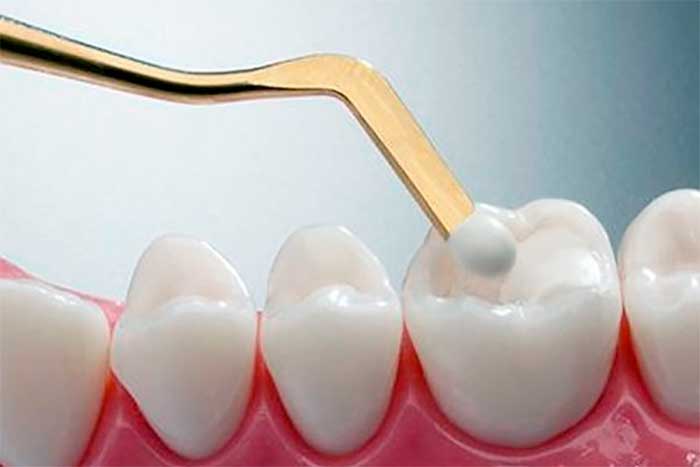To successfully treat caries, the diseased tooth structure is first completely removed. In our dental practice we place great importance on sacrificing as little healthy tooth structure as possible.
Modern minimally invasive dentistry allows the reconstruction or rebuilding of a tooth without destroying healthy tooth structure.
White fillings or composite fillings.
We usually use the so-called composite filling for small dental defects in the anterior and posterior tooth areas. This high-quality, ceramic-reinforced plastic is a stable and durable filling material, but its use is somewhat more complex than conventional methods of tooth filling. Several individual layers of the material are applied directly to the tooth. In addition to the aesthetic aspect, this also has the advantage that edge joints can be reduced to a minimum. Another plus is that there is almost no need to sacrifice any healthy tooth structure. In our dental clinic we only work with high quality nanoplastic fillings,
to make fillings. This allows us to achieve high stability and high esthetics, especially tooth color.
Ceramic inlays
Ceramic inlay is a type of sophisticated, metal-free treatment that is as good as a gold inlay.
Unlike composite fillings, inlays are not fabricated in the mouth, but in the dental laboratory and are bonded to the area to be filled with a special adhesive at a second appointment with the dentist.
Inlays are preferably used in the posterior tooth region to restore larger chewing defects. The destroyed or diseased tooth substance is replaced as realistically as possible.
Many individual work steps are necessary before an inlay can be accurately inserted. That’s why it’s important to work with a dental technician you can trust 100%. Because each inlay is an individual masterpiece. This sophisticated technology offers the best possible aesthetics, durability and material compatibility. After placement, a ceramic inlay is barely distinguishable from a natural tooth.
